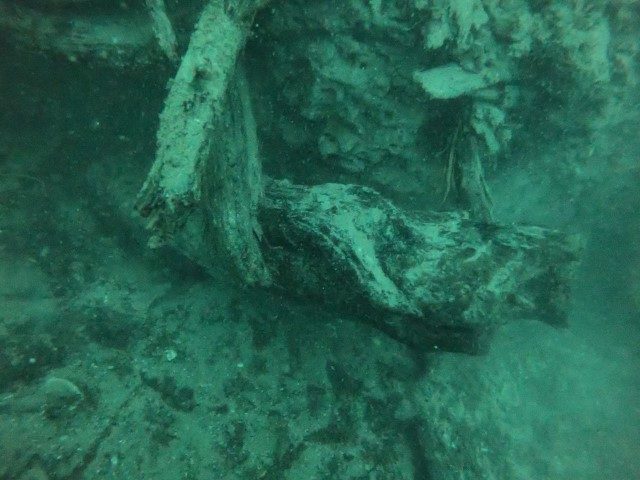
According to an article published April 1 by the National Oceanic and Atmospheric Administration (NOAA), the ancient forest remained undisturbed until recent intensifying storms (including Hurricanes Ivan and Katrina) along the coast have been sweeping up the seabed and sediment that kept the forest entombed.
The site now lies 60 feet underwater, and in the last four to five years, has been visited by a few scientists and filmmakers. But in December, a team of scientists from Northeastern University and the University of Utah set out on an expedition, funded by NOAA, to dive into the waters and bring back pieces of wood to study.
Brian Helmuth, a professor of marine and environmental sciences at Northeastern University, was one of the scientists. In a story by CNN, Helmuth said that when they "got to the bottom, it was like diving in chocolate milk." When the scientists finally reached the forest, they were in awe.
"We dove around the edge of this ancient river bed. On our left were these remains of giant stumps and pristine wood coming out of the bank embankment," Helmuth recalled. It still had bark on it. It still had all the coloration on the inside. It was just locked away for 60,000 years," Helmuth said.
Back at the lab, the real excitement was examining the different organisms buried in the wood. Out of the more than 300 animals that were removed, scientists were focused on just one: shipworms, a type of clam that converts wood into animal tissue, according to NOAA. Shipworms are sometimes called "termites of the sea."
Most of the 100 strains of bacteria found from the shipworms here had never been discovered before, and 12 are undergoing DNA sequencing to evaluate their potential to make new drug treatments - including pain and anti-cancer drugs.
While the coronavirus pandemic has put dives to the ancient forest on hold, the scientists will continue to study the samples and hope to publish the results within a year.
Francis Choi, a senior lab manager at Northeastern University's Marine Science Center, said they're working on getting AUVs -- unmanned underwater robots -- to capture images and make 3D visualizations to share the wonder of this 60,000-year-old forest with the rest of the world.



Comment: This submerged forest is a testimony of the higher sea level. 12,000 years ago, sea level was 100 meter (330 feet) lower than today. Knowing that human activity is mostly coastal, how many remnants of previous civilizations are now under water?